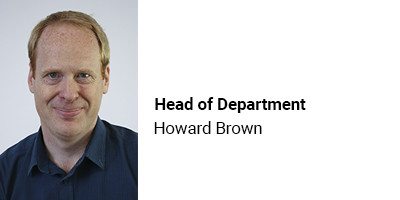History of Art A level
Qualification: GCE A level in History of Art
Exam Board & Specification Code: Pearson; 9HT0; Specification
Course Entry Requirements: 4 in English Language and 4 in English Literature.
Please make sure that you have understood the overall entry requirements to study at BHASVIC. These are available here and outline the GCSE grades you need to take up one of the Study Programmes at the college.
Length and size of qualification: 2 year single course
Timetable hours: 4.5 hours per week
Assessment method: 2 written exams
BHASVIC Department: Humanities

What will I study?
History of Art is a fascinating course that explores our global cultural heritage. It asks how the great masterpieces of art have been produced, what they mean and why they have such an impact on us. The course is built on three key elements: Visual Analysis; Themes and Periods. You begin with a course in visual literacy that equips you with the essential concepts, skills and vocabulary to understand fine art, sculpture and architecture. Themes are broad-based investigations into artistic developments and connections between movements and periods across time and space. You explore works in relation to two themes: Identities and Nature focusing on, for example gender, ethnicity and ecology. Finally, you focus on two artistic periods: the 17th century Baroque and Modernism in Europe at the start of the 20th century. Here you investigate the relationships between key artists such as Caravaggio and Picasso and the concepts and contexts that shaped their work such as the struggle between the Catholic and Protestant faiths and the devastating impact of the First World War. Throughout the course, you will learn how to analyse and make critical judgments about art while also building an understanding of the significance and contribution of key individual artists and the relationship between art, technology, society and politics across the entire world.
Is this course right for me?
History of Art is an excellent option for any student who is interested in visual culture and the world around them. It stands as a marvellous complement to practical visual arts subjects but would be of equal interest to English, History, Media, and Sociology or Politics students as it borrows approaches from all these disciplines. It is analytical in nature and is assessed by means of two written examination papers. Lessons are focused on images and always involve discussion of themes or key works. You will be encouraged to undertake individual research via reference works, films, television programmes or some of the huge range of podcasts and resources available via the internet. Moreover, we will have many opportunities for visits to public galleries, museums and installations.
Where next?
The cultural sector in the UK is crucial to the economic health of the nation and provides a massive range of job opportunities, including art management, advertising, PR, curatorship, publishing, design and education. Studying History of Art can open many doors directly into these careers. Perhaps equally important are the widely transferable skills it fosters that can apply to an even broader range of careers in journalism, business, law and the media. We live in a visual world and people with the ability to process, analyse and re-present ideas are highly prized.
Apply View Department